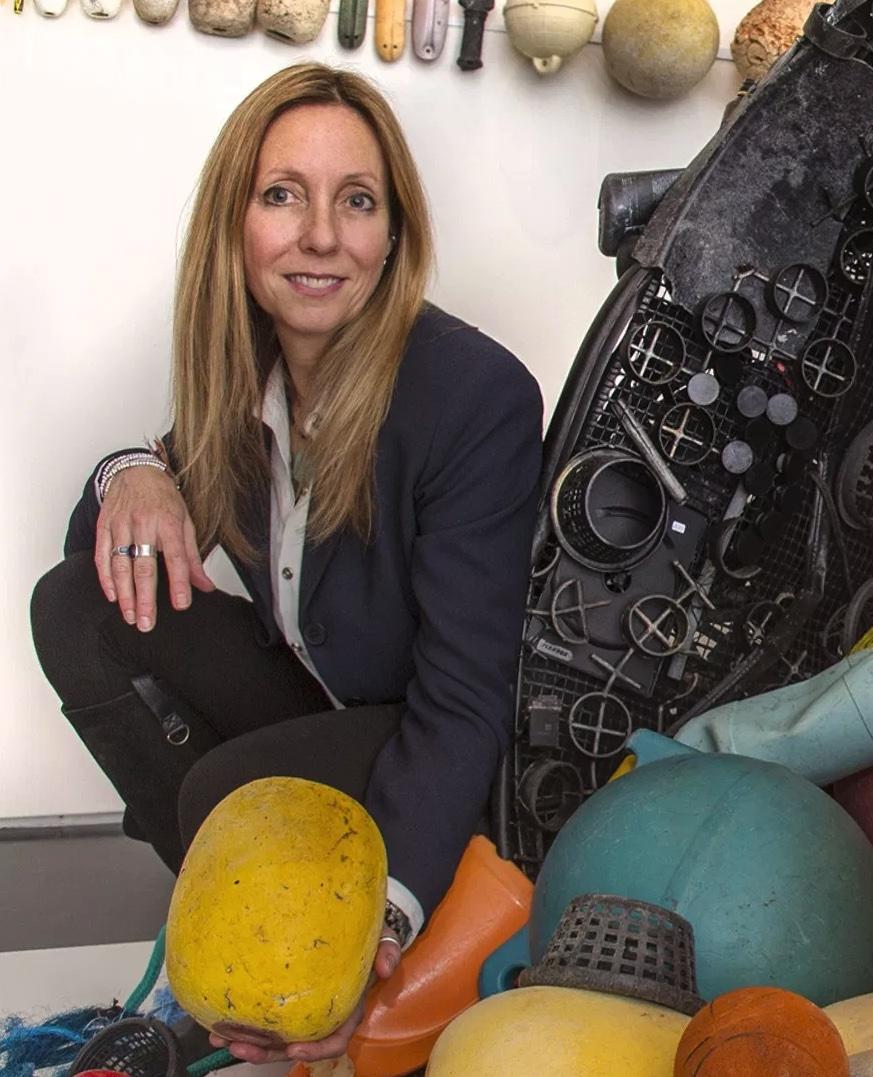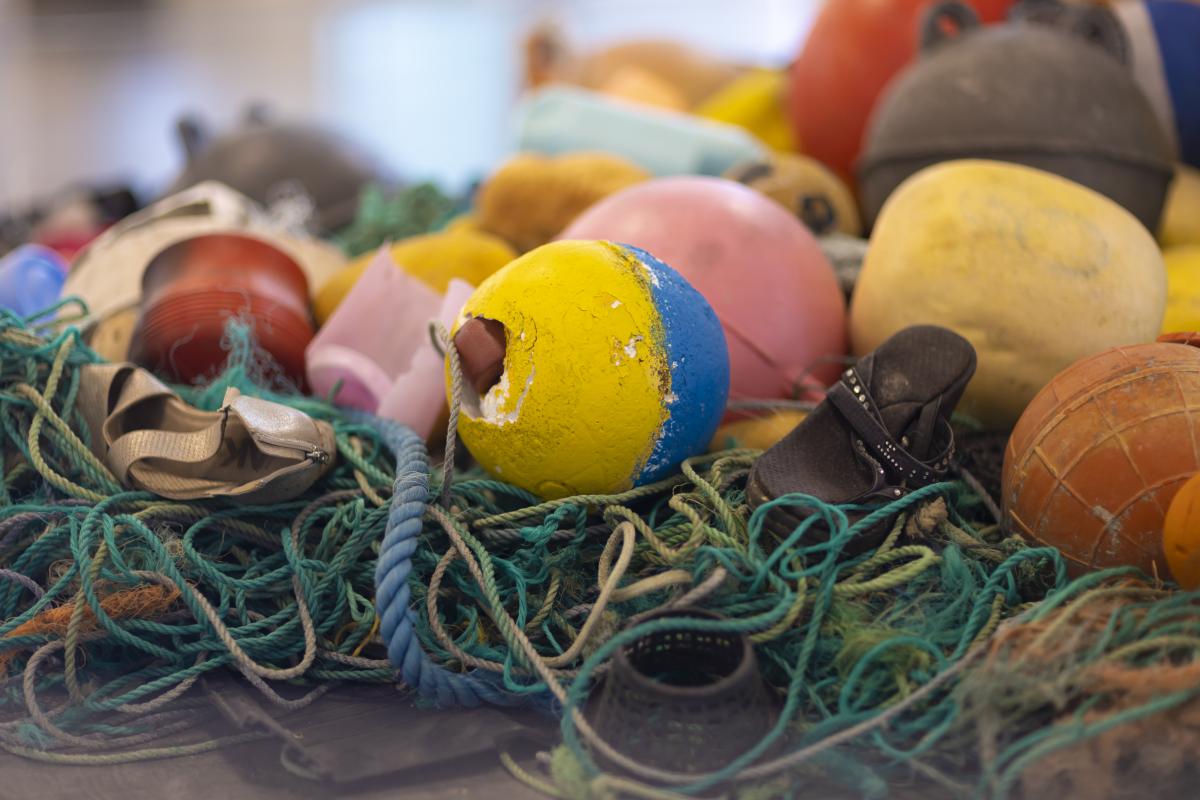After eye-witnessing immense amounts of plastic coming from the ocean in remote Hawaii in 2005, I created the Drifters Project, a conceptually based artistic research project focusing on vagrant plastic pollution, the global marker of the Anthropocene.
Begun as a solo endeavor, over time my work shifted to a form of collective art activism and is now an elastic, international collaborative focusing on ocean plastic pollution. I lead forensic beach cleaning training, photographing deposition sites and the haunting objects I discover, removing tens of thousands of pounds of plastic in the past 17 years. Framed within a conversation on globalism, conservation + climate change, Drifters Project involves painting, photography, sculpture and installation to address the troubling psychological relationship of humans to the natural world.
The world’s ocean currents bring an astonishing array of plastic debris that collects in the sea caves and beaches of coastal zones across the globe. The currents transport and mix the debris into a colony of drifters that temporarily alight and gather onshore, an amazing and shocking visual array of the stuff of global consumerism. I remove this material from the natural environment and resituate in the social space by making meticulous installations and sculptures of the collected debris and large-scale site photographs of the disturbed locations.
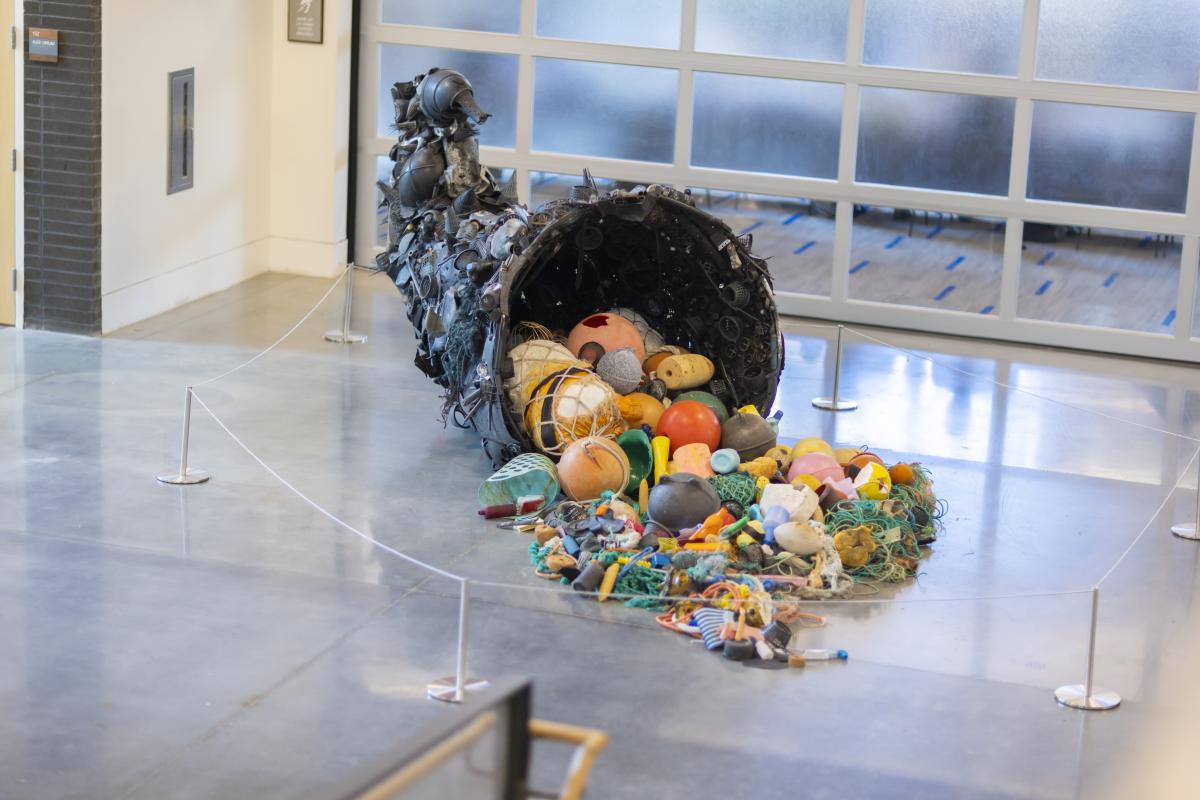
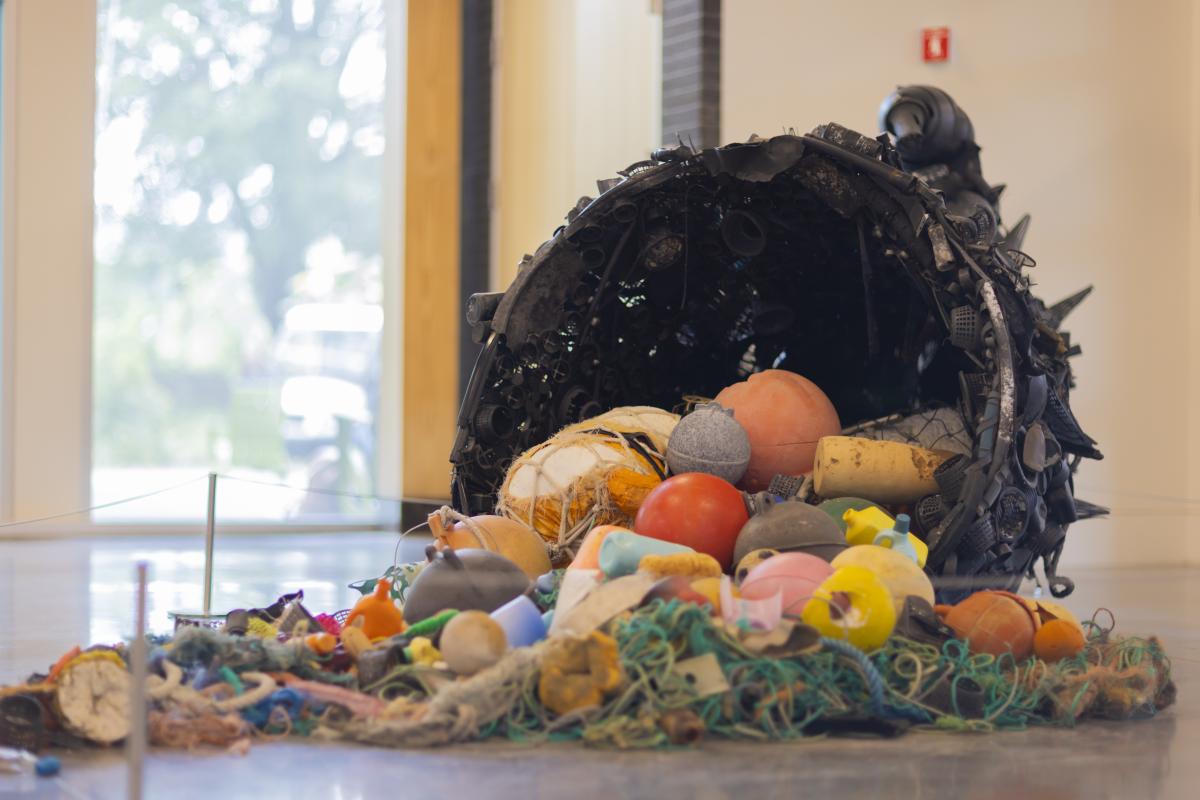
I see the plastic as a portrait of global late-capitalist consumer society and serves as a siren call to humanity that our actions have pervasive and far-reaching effects. The plastic elements initially seem attractive and innocuous, like toys, some with an eerie familiarity and some totally alien. At first, plastic seems innocent and fun, but it is not, it is dangerous. Photographic 'portraits’ of the uncanny objects are sad yet beautiful relics of human cultural anthropology. Physically seeing the material makes one see the world from a different perspective. Drifters Project provides a look at our material artifacts and their collision with nature, at once changed by the process, and changing the very substance of the earth and its creatures.
As we see images of common things like combs and toothbrushes, we recognize ourselves in these everyday objects that have been force-fed to the ocean. Drifters Project serves to catalog this materiality with forensic information: photo documentation, a museum label, (denoting the date, location, collector) and other data. The photographs have a strong emotional appeal because of the curiosity of the objects’ strange deformations by the forces of nature; their qualities of movement over time and space as drifters; their personal connection to us as humans; their ability to jog memory and body association; and the way they provide a mirror to ourselves showing our need to take responsibility for what we make and discard.
This work serves as a call to action, a record of our indisputable impact, a look at what we might be losing, and perhaps our last chance to reverse this trend.
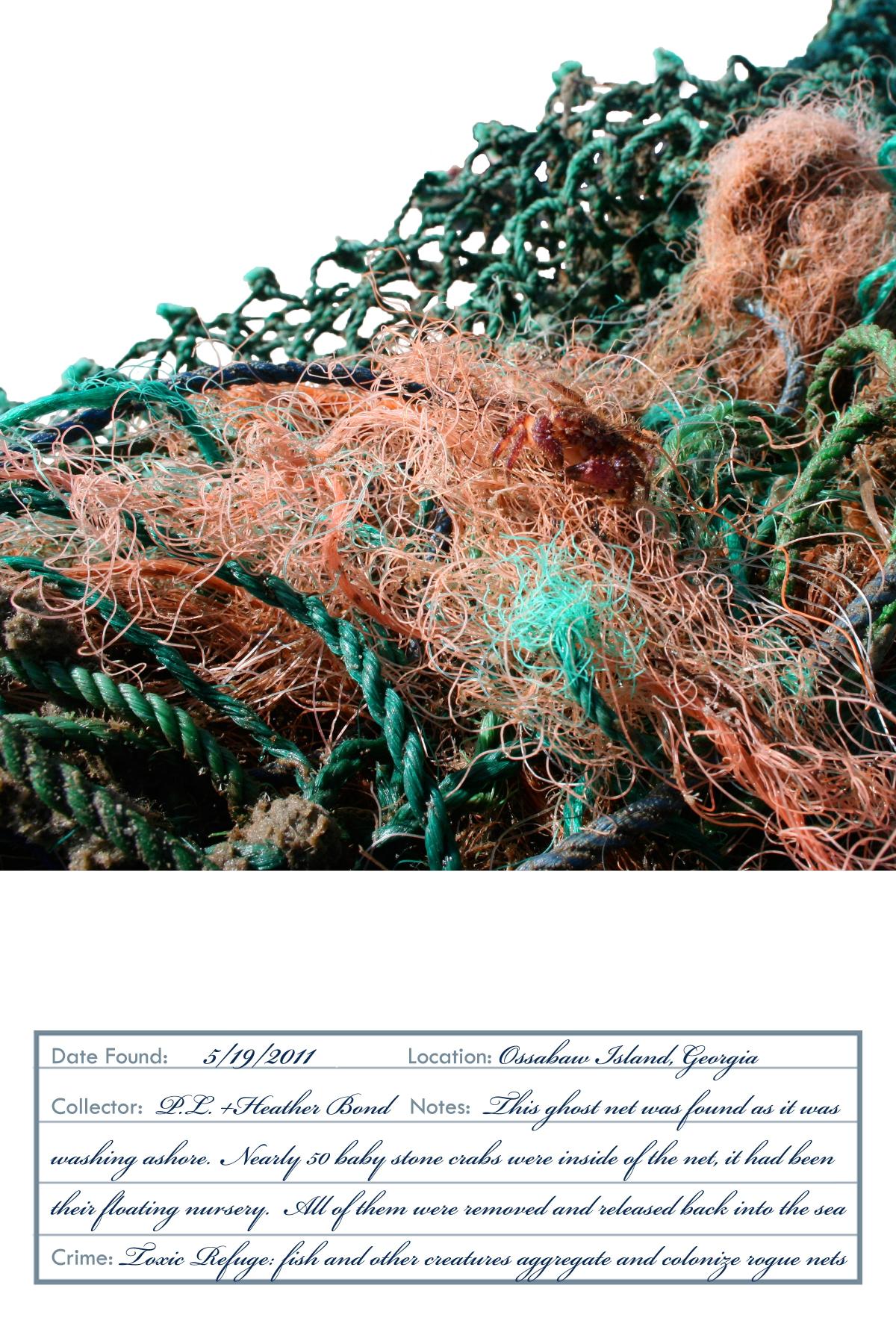

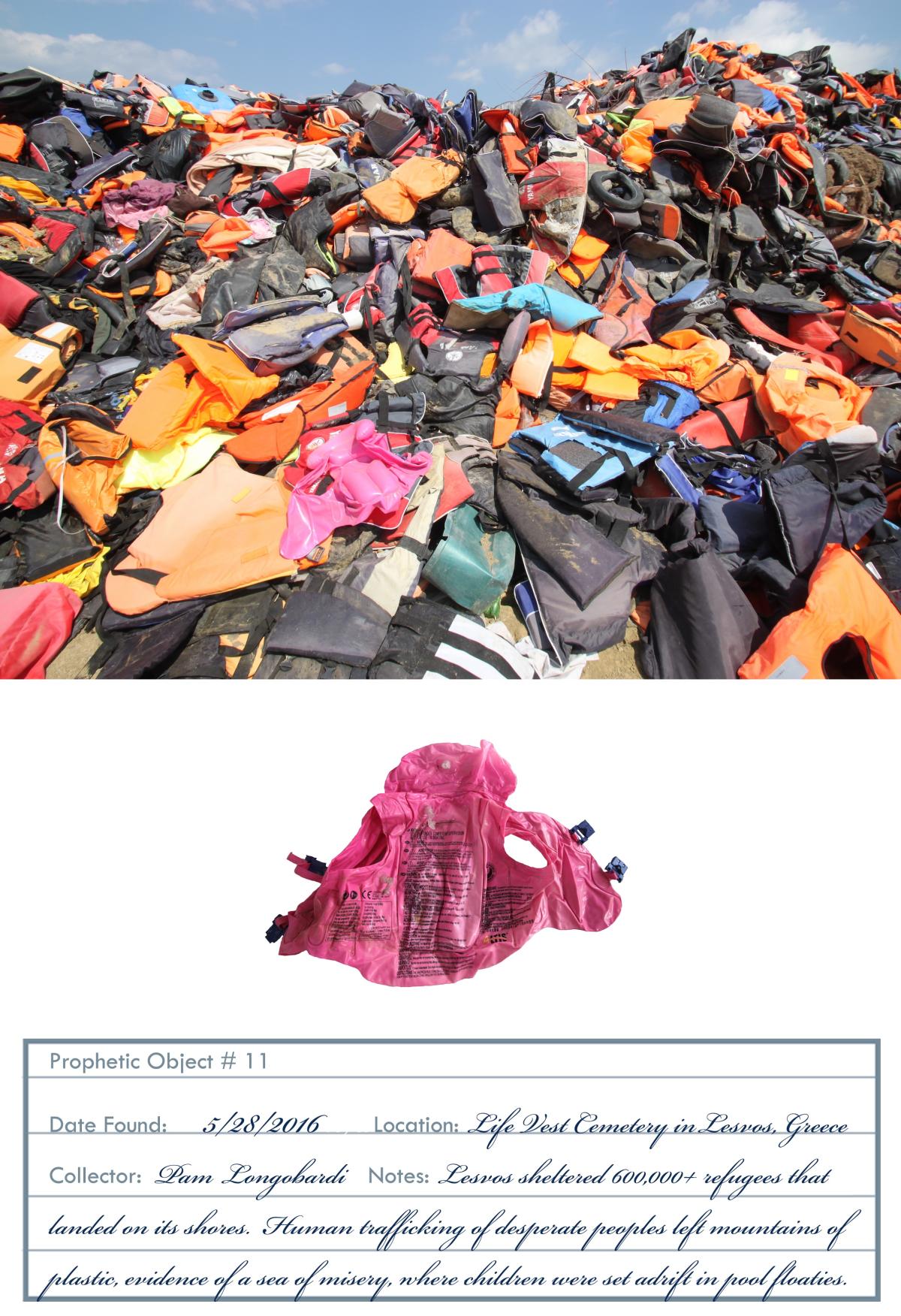
Pam Longobardi
Pam Longobardi’s parents, an ocean lifeguard and Delaware’s female diving and swimming champion, connected her from an early age to water life. She moved to Atlanta in 1970 and saw her beloved neighborhood pond drained to build the high school she attended. Since then, she lived for varying time periods in Wyoming, Montana, California, and Tennessee, and worked as a firefighter and tree planter, a scientific illustrator and an aerial mapmaker, as collaborative fine art edition printer and color mixer, and designer and freelance artist.
Discovering mountains of plastic on remote Hawai’ian shores in 2005, she founded the Drifters Project in 2006, centralizing the artist as culture worker/activist/researcher. Now a global collaborative entity, Drifters Project has removed tens of thousands of pounds of material from natural environments and re-situated it as social sculpture. Her studio-based and social practice ranges from paintings, collage, photography, large-scale sculpture, installation, to public actions and performance and has been exhibited around the world.
Longobardi has shown her artwork across the US and in Greece, Monaco, Germany, Finland, Wales, Britain, Slovakia, China, Japan, Italy, Spain, Belgium, Poland and twice done projects as part of the Venice Biennale. Winner of the prestigious Hudgens Prize, Longobardi was featured in National Geographic, SIERRA magazine, Weather Channel, multiple films and public television and news broadcasts. As Oceanic Society’s Artist-In-Nature, she co-leads expeditions to remote places, working with participant communities remediating plastic and its environmental impact, making public art, and fostering behavior change. She lives in Atlanta, GA, as Regent’s Professor at Georgia State University. A 16-year survey of her work opened in Jan 2022 at the Baker Museum in Naples, FL with a comprehensive monograph published by Fall Line Press titled Ocean Gleaning. Longobardi’s work is framed within a conversation about globalism and conservation.
